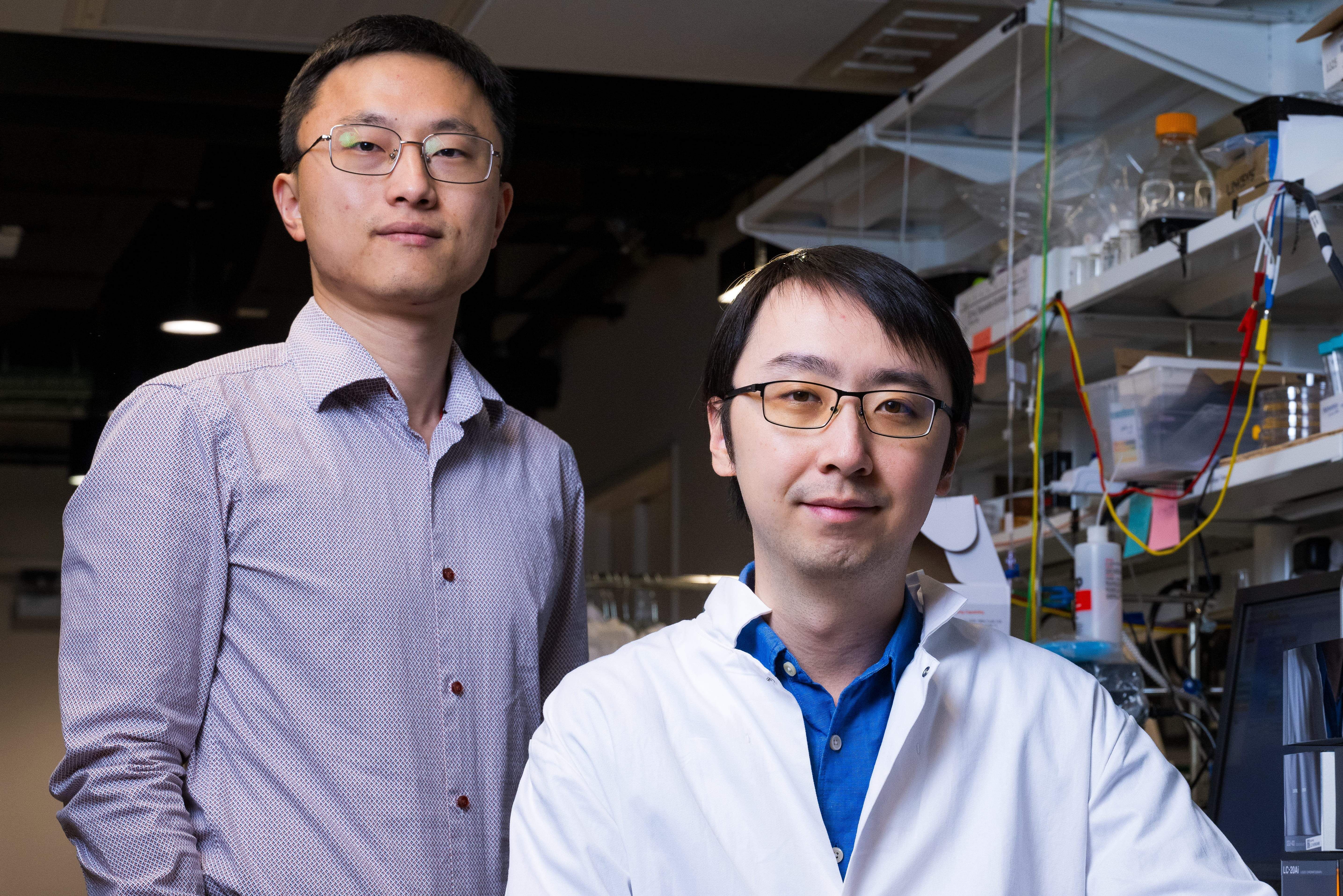seeing green
Houston lab develops reactor that sustainably turns waste into ammonia

Led by Haotian Wang (left) and Feng-Yang Chen, the Rice University team published a study this month detailing how its reactor system sustainably converts waste into ammonia. Photo by Jeff Fitlow/Rice University
A team of Rice University engineers has developed a reactor design that can decarbonize ammonia production, produce clean water and potentially have applications in further research into other eco-friendly chemical processes.
Led by Rice associate professor Haotian Wang, the team published a study this month in the journal Nature Catalysis that details how the new reactor system sustainably and efficiently converts nitrates (common pollutants found in industrial wastewater and agricultural runoff) into ammonia, according to the university. The research was supported by Rice and the National Science Foundation.
“Our findings suggest a new, greener method of addressing both water pollution and ammonia production, which could influence how industries and communities handle these challenges,” Wang says in a statement. “If we want to decarbonize the grid and reach net-zero goals by 2050, there is an urgent need to develop alternative ways to produce ammonia sustainably.”
Other methods of creating ammonia include the Haber-Bosh process and electrochemical synthesis. The Haber-Bosh process requires large-scale centralized infrastructure and high temperature and pressure conditions. Meanwhile, electrochemical synthesis requires a high concentration of additive chemicals.
According to Rice, the new reactor requires less additive chemicals than the electrochemical synthesis, allowing nitrates to be converted more sustainably. The reactor relies on an innovative porous solid electrolyte as well as recyclable ions and a three-chamber system to improve the reaction’s efficiency.
Additionally, this development provides an effective water decontamination method.
“We conducted experiments where we flowed nitrate-contaminated water through this reactor and measured the amount of ammonia produced and the purity of the treated water,” Feng-Yang Chen, a Rice graduate student who is the lead author on the study, says. “We discovered that our novel reactor system could turn nitrate-contaminated water into pure ammonia and clean water very efficiently, without the need for extra chemicals. In simple terms, you put wastewater in, and you get pure ammonia and purified water out.”
Pedro Alvarez, the George R. Brown Professor of Civil and Environmental Engineering, director of the Nanosystems Engineering Research Center for Nanotechnology-Enabled Water Treatment (NEWT) and the Water Technologies Entrepreneurship and Research (WaTER) Institute at Rice, says the reactor is "very timely and important" for growing cities that must deal with nitrate-contaminated groundwater supplies it.
"Conventional nitrate removal in drinking water treatment involves ion exchange or membrane filtration by reverse osmosis, which generates brines and transfers the nitrate problem from one phase to another,” he continues.
Wang's lab has been making headlines in recent years for innovative processes and technologies focused on the energy transition.
Last year, the lab published a study in Nature detailing a new technology that uses electricity to remove carbon dioxide from air capture to induce a water-and-oxygen-based electrochemical reaction, generating between 10 to 25 liters of high-purity carbon using only the power of a standard lightbulb.
In 2022, Rice reported that Wang’s lab in the George R. Brown School of Engineering had also replaced rare, expensive iridium with ruthenium, a more abundant precious metal, as the positive-electrode catalyst in a reactor that splits water into hydrogen and oxygen.
The lab received a portion of $10.8 million in research grants from the Houston-based Welch Foundation for research focused on converting carbon dioxide into useful chemicals, such as ethanol, last year. And Solidec, founded by Ryan Duchanois and Yang Xia from Wang's Lab, also received a $100,000 award from Rice as part of the One Small Step Grant program.
Wang has also been named among one of the most-cited researchers in the world.